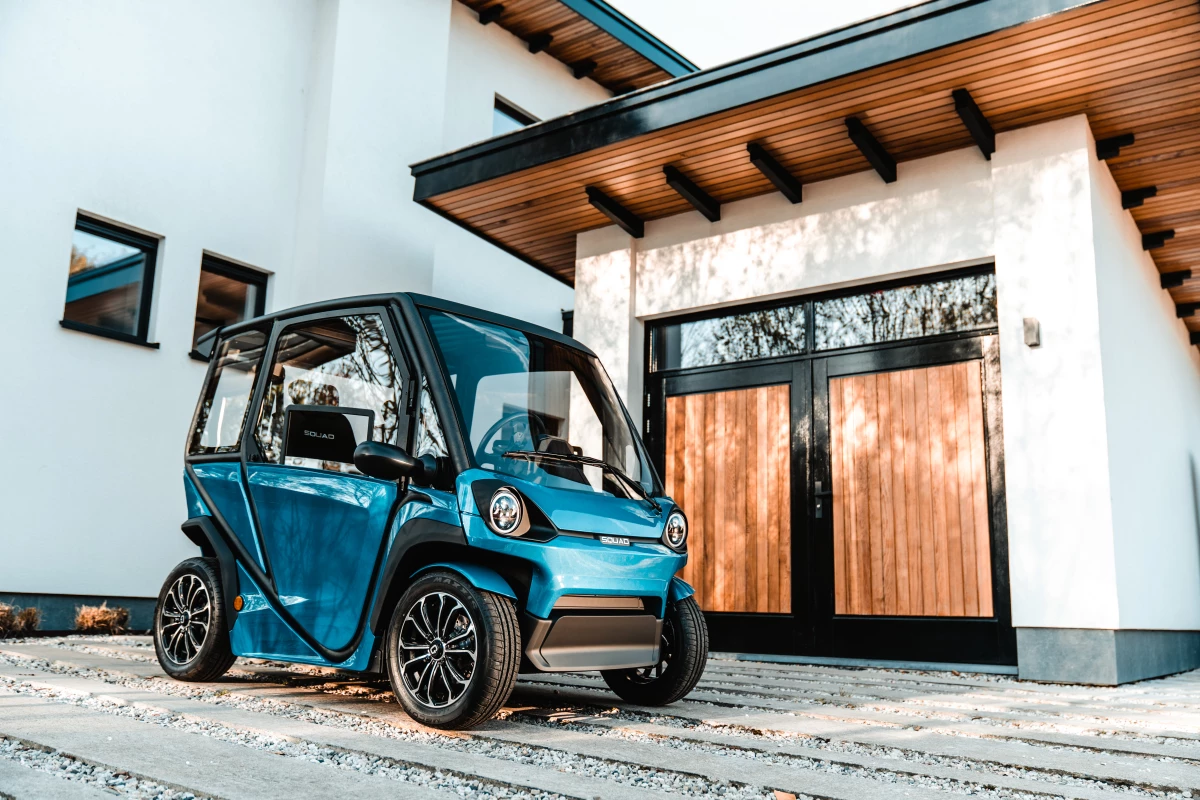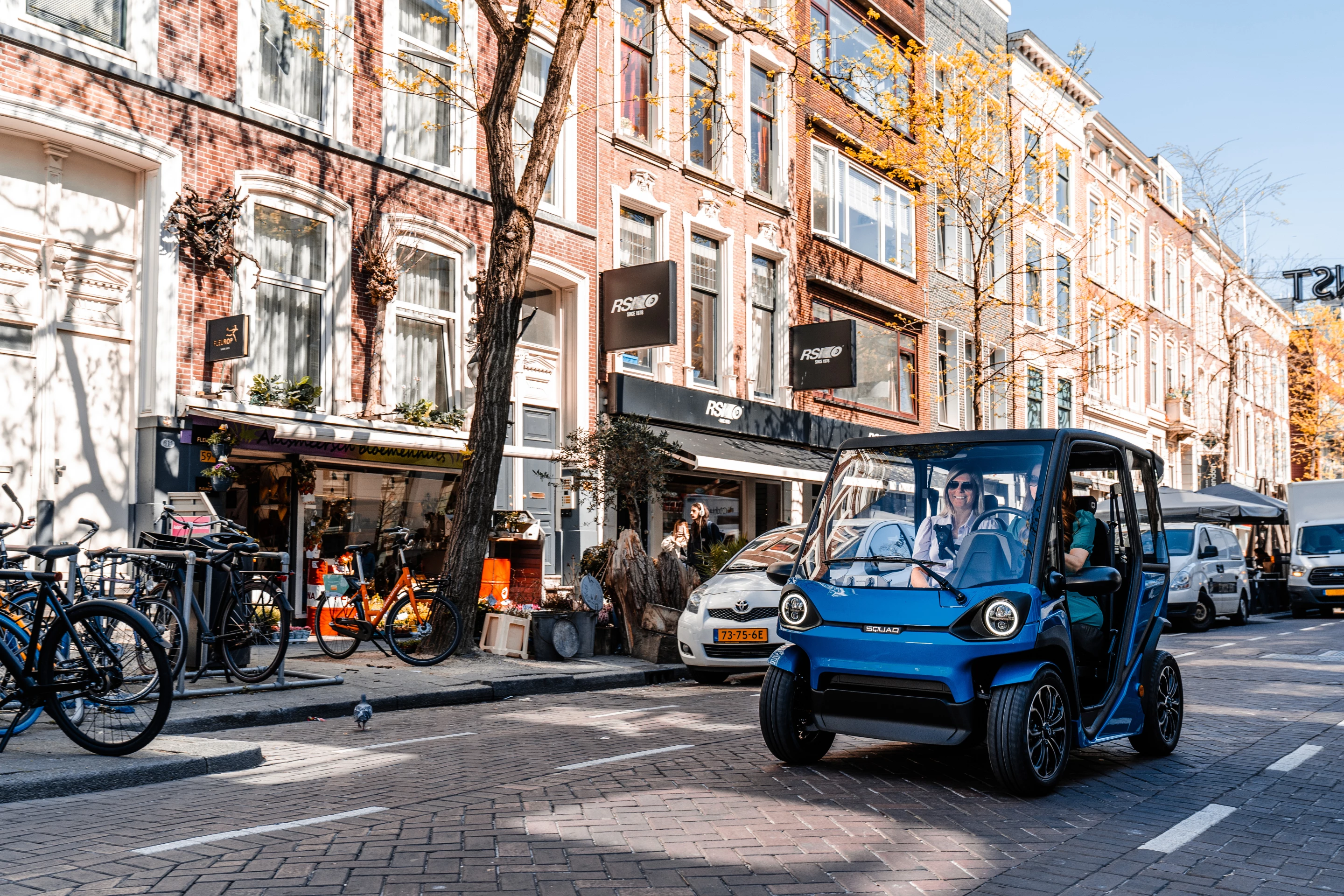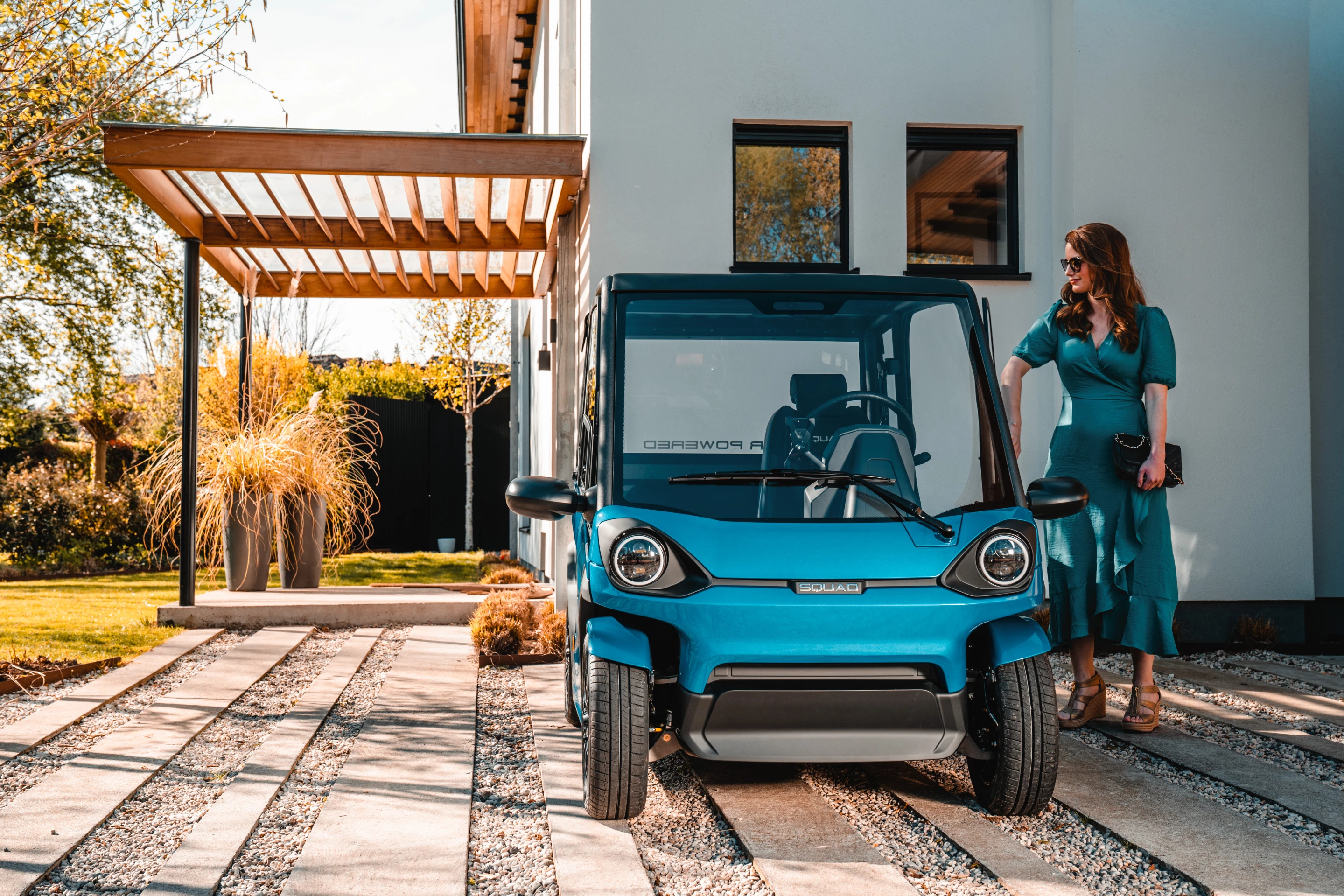Dutch startup Squad Mobility launched in 2019 when two former Lightyear colleagues decided their efforts would be better spent on a solarized electric vehicle that everyday people could actually afford ... and afford rather easily in comparison to any car. At the time, the company had only renderings and promises, but on Monday it revealed the completed Squad car for the first time. The car has evolved noticeably while still maintaining Squad's goal of offering a small, simple, affordable city car with solar-charged electric powertrain.
Squad's design has taken on new life since the initial renderings, gaining a more upright stance, optional doors and more definition throughout. The visible frame has been modestly re-dimensioned, with a generous number of windows added all around. Both front and rear ends have been more fully developed, and the headlamps sink into the front fascia rather than standing out on their own, connected together by a badged strip. Angular contrast arches sit over top the wheels, and the front wheels come with independent fenders below the arches.
Inside, the Squad is simple but functional, carrying two people secured via three-point seatbelts. The small, low dashboard that separates the occupants from the large windshield works as a storage area and laptop workstation for the passenger. It also includes two cupholders, and Squad Mobility shows one of them being used to hold a portable Bluetooth speaker. The Squad car has 68 liters of storage space behind the seats, which expands to 243 liters with the passenger seat folded down.
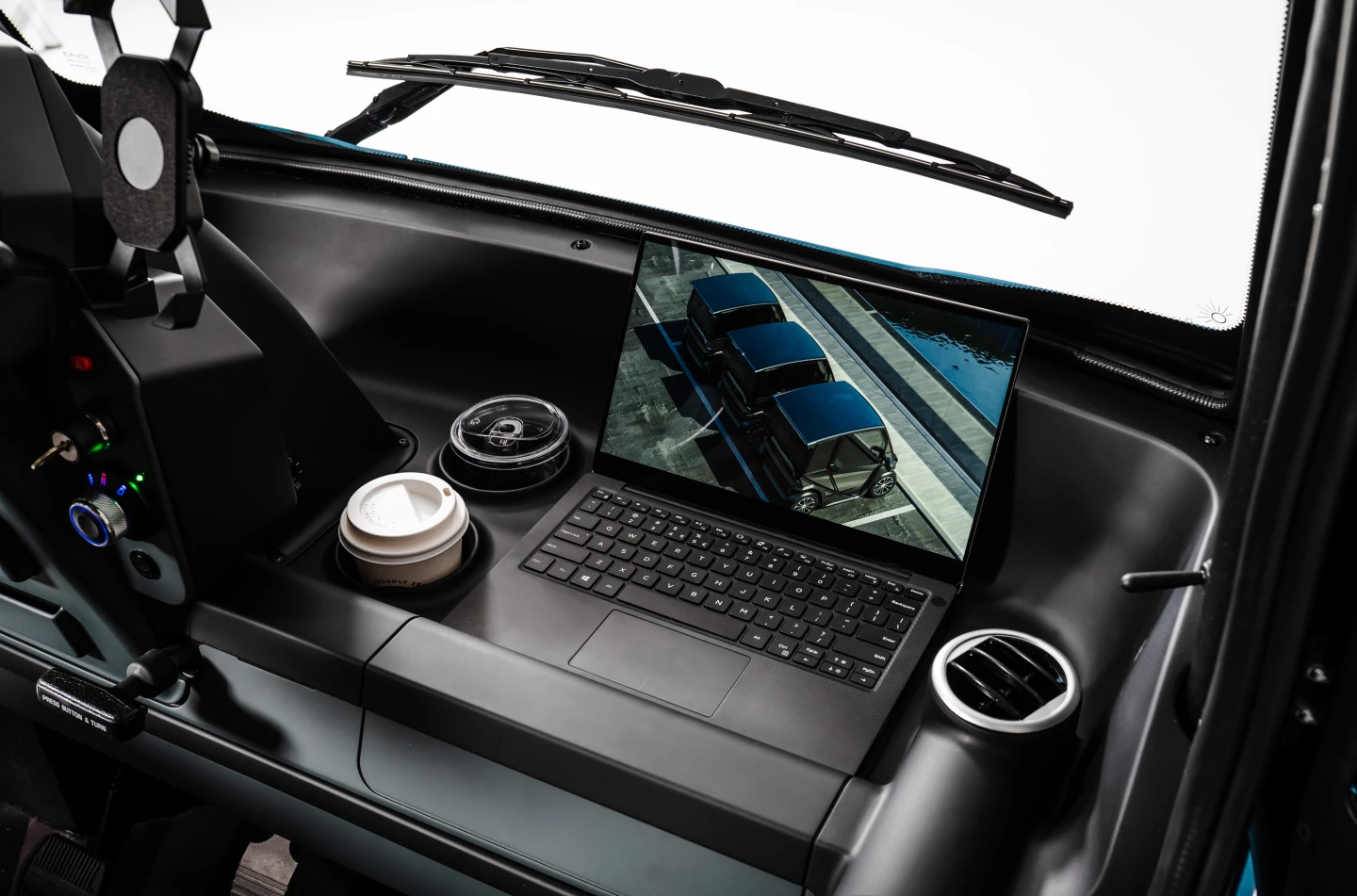
Ultimately, the Squad car still bears more resemblance to a golf cart than a modern two-door automobile, seating two people in a stripped-down cabin supported by a tubular-aluminum roll cage. Plans call for it to be homologated under Europe's L6e light electric quadricycle category, and the design includes front and rear crash structures. Doors can be tacked on as an option at the time of purchase or later down the line ... like when late autumn hits and the owner realizes cheaping out on car doors was a shortsighted call.
The Squad's two 2-kW in-wheel rear motors power it to a top speed of 45 km/h (28 mph). The lithium-ion batteries offers a range up to 100 km (62 miles), and the portable, suitcase-style battery design is aimed at easy swapping for added range. The car is also designed to add roughly 20 km (12 miles) during a European summer day solely via the solar panels integrated into its roof. Squad reckons that'll meet the 12-km/day (7.5-miles/day) needs of some city commuters, and those who need more can easily remove the battery and charge it using a standard 220-V outlet.
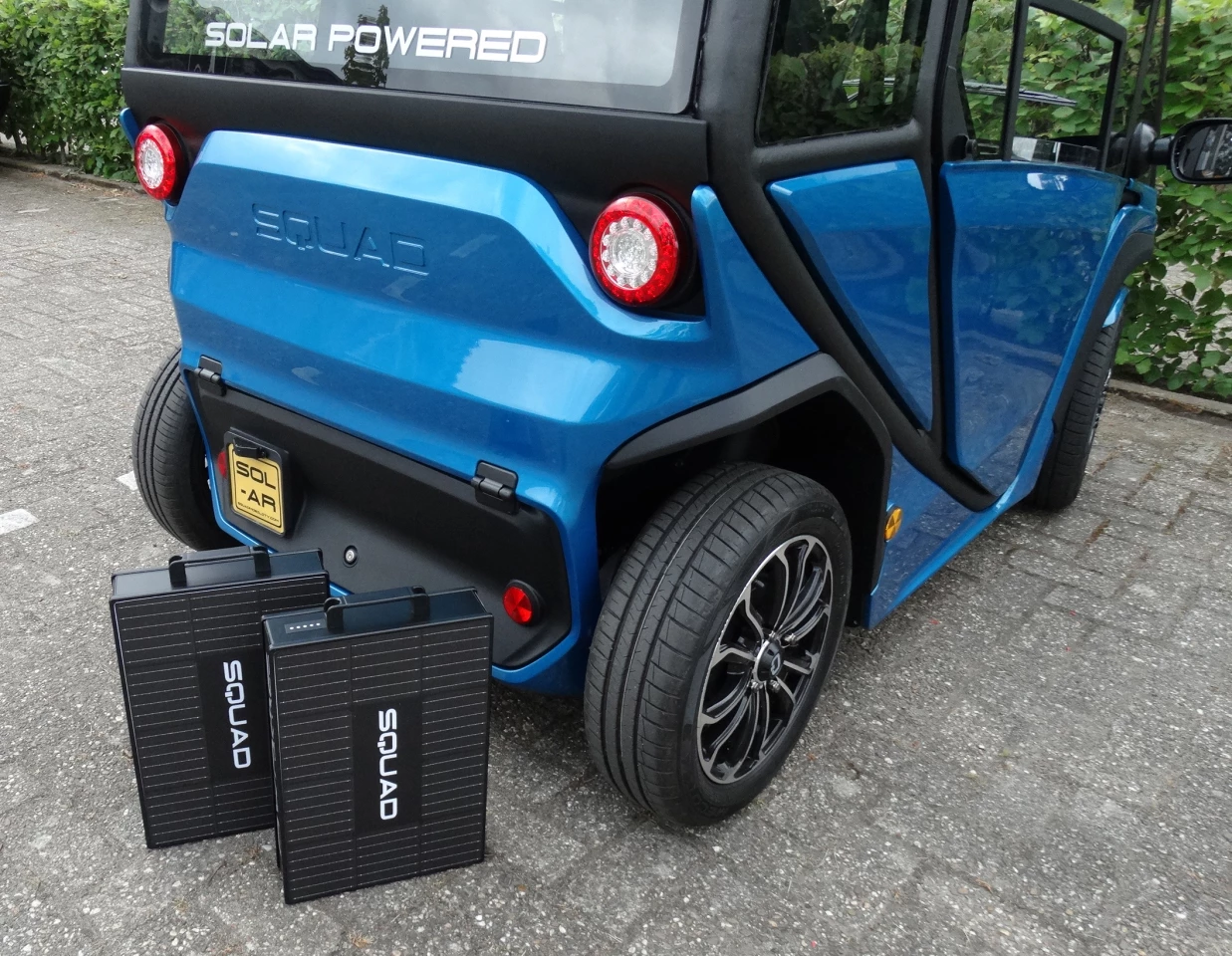
The diminutive Squad measures just 2 m (6.6 ft) long by 1.2 m (3.9 ft) wide by 1.6 m (5.2 ft) tall. It has a 6-m (19.7-ft) turning circle and is sized to squeeze into parking spaces (or empty space between parked cars) that drivers of standard cars wouldn't dare attempt. Squad says that three will fit neatly in a single parking space.
The Squad debuted on Monday ahead of its showing at this week's Fully Charged Live electric vehicle show in Amsterdam. Preorder pricing has gone up only modestly from the initial 2019 €5,750 base price and is now a still very affordable €6,250 (approx. US$6,525) before tax for the most basic layout and €9,300 (US$9,700) for the most well-equipped Signature Edition. Refundable reservation fees vary between €50 and €5,000. Squad offers zero-down payment preorders for interested buyers outside of Europe, but it hasn't yet decided which global markets into which it will expand.

Squad plans to get production underway in 2023, with initial deliveries going to its home market in the Netherlands before moving eastward and southward through Europe. It also plans to offer the Squad for lease and/or subscription with a targeted $100/month lease price, and for car-sharing operations.
One-minute intro promo follows.
Source: Squad Mobility
